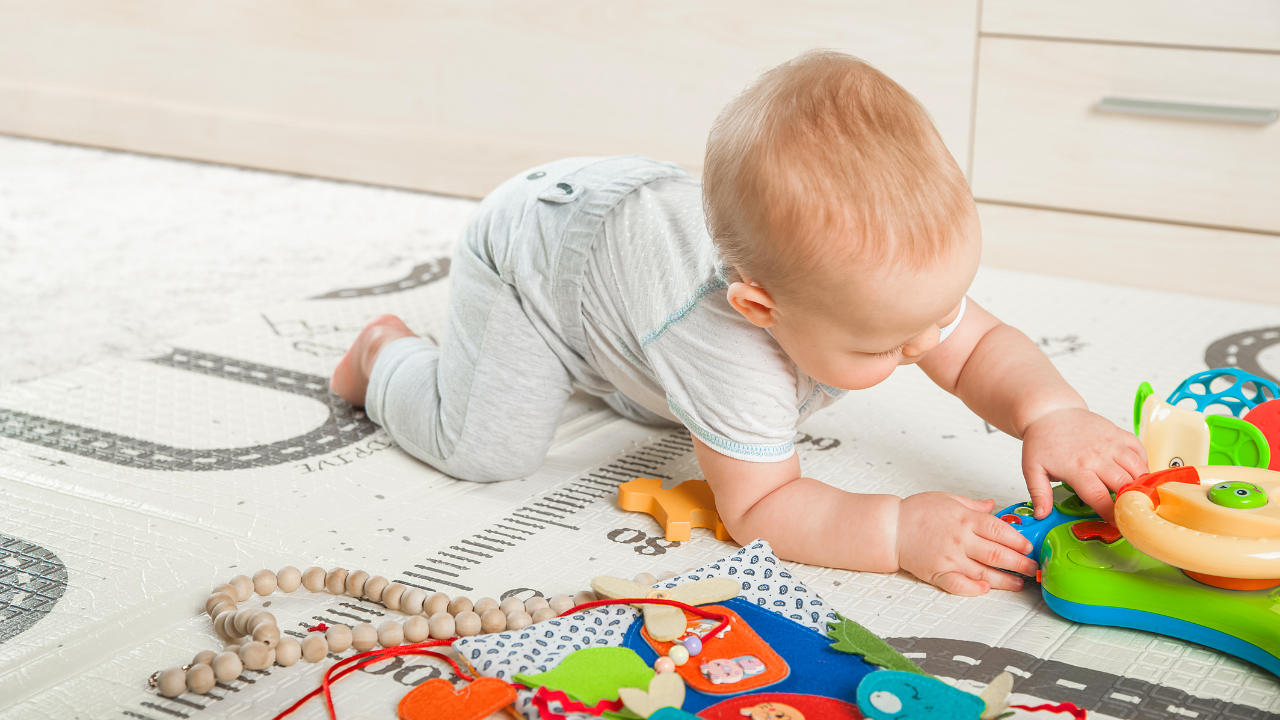The Power of Open Floor Play

The baby registry—where expectant parents go in with wide eyes and excitement and come out with an overwhelming list of "must-haves" that promise to make life easier. Diapers? Absolutely essential. A crib? Non-negotiable. A car seat? You bet. But then the list keeps growing—swings, bouncers, exersaucers, activity centers—because, obviously, babies need their own personal amusement park, right? How did previous generations ever survive without all this gear!?
Spoiler alert: they did. And quite well, actually. While these baby containers are fun (and let's be honest, a lifesaver for parents needing five minutes to eat a meal while it’s still warm), they don’t actually do much for baby’s development. The one thing babies truly need? A wide-open space. No batteries, no flashing lights—just a safe place to move, explore, and build the foundational skills for rolling, crawling, and walking. And guess what? That’s been available for centuries.
The Benefits of Open Floor Play
1. Sensory Development: Proprioception and Vestibular Input
Open floor play is like a sensory buffet for babies. It strengthens their proprioceptive system (which helps them know where their body is in space) and their vestibular system (which keeps them balanced and coordinated). Every time they roll, push up, or crawl, they’re sending critical information to their brain that helps with movement, stability, and body awareness. It’s like their own personal training ground—minus the gym membership.
2. Strengthening for Future Milestones
Babies don’t wake up one day and just start walking—they build up to it. Open floor play strengthens the muscles needed for every stage. Tummy time works those upper body muscles for crawling, rolling builds core strength for sitting balance, and crawling itself? That’s basically a full-body workout getting them prepped, standing, walking, coloring, cutting, and self dressing. Who needs baby dumbbells when they have gravity and a good old-fashioned floor?
3. Crossing the Midline
Ever notice how babies reach across their bodies to grab a toy? This simple movement involves crossing midline- crossing over the imaginary line that runs down the center of the body. This skill builds brain connections for coordination and paves the way for future skills like reading, writing, dressing, and playing sports. The more opportunities babies have to twist, turn, and reach across their midline, the more they’re strengthening their ability to use both sides of their body efficiently in coordination with the brain.
4. Vision Development
Rolling, reaching, and crawling all help babies improve their visual tracking and depth perception. When they follow a toy, shift focus from near to far, or track movement as they explore, they’re developing key visual skills needed for reading and hand-eye coordination. Think of open floor play as their first introduction to a world where they’ll eventually need to copy notes from the smart board, track friends racing past during a game of tag, or swing a bat at just the right moment.
5. Coordination and Motor Planning
Babies are natural problem-solvers. They experiment with movement, shift weight, and figure out how to navigate their surroundings, all while developing coordination and motor planning skills. These skills lay the groundwork for future activities like climbing, running, and even fine motor tasks like using utensils.
Encouraging Open Floor Play Daily
Want to maximize floor time? Here are some easy ways to make it happen:
- Tummy Time: This can actually start on day one! It’s one of the best ways to kick-start motor development. If your baby isn’t loving it, try laying them on your chest while you recline—it’s tummy time with a built-in cuddle bonus.
- Safe Exploration Space: Baby-proof an area with soft surfaces so they can move freely. Lay down some foam tiles or a large rug to make the space more comfortable. A large playpen is also an excellent way to keep baby safe without restricting movement.
- Limit Container Time: Go ahead and place your baby in a swing or bouncer when you need a few minutes to go to the bathroom or get dinner ready. But try to be mindful of limiting the time baby is spending in these items throughout the day. The “station rotation” game of moving between the car seat, stroller, highchair and swing all day long inhibits movement, which means less sensory input and muscle strengthening. These baby gadgets can be useful and soothing, but like anything, moderation is key.
- Use Different Floor Textures: Let your baby experience a variety of surfaces—carpet, hardwood, foam mats—to enhance their sensory input and strengthen different muscle groups. Even heading outside to play on the grass offers a rich sensory experience.
- Encourage Barefoot Play: Letting babies explore without socks or shoes helps improve their balance, grip, and foot strength, setting them up for better walking skills.
At the end of the day, the best thing you can do for your baby’s motor, sensory, and cognitive development is to ditch the gear (or limit it) and let them move. So clear some space, and let your little one explore.





